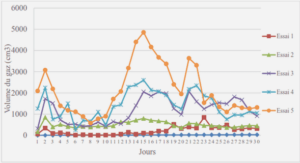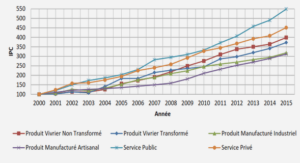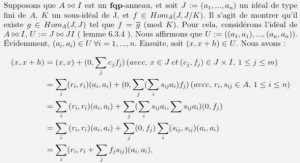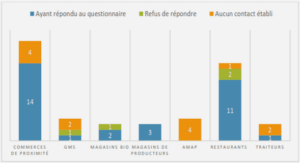Imaging of Thin Penetrable Inclusions by a MUSICType Algorithm
The imaging of a thin inclusion, with dielectric and or/magnetic contrast with respect to the embedding homogeneous medium is investigated. A MUSIC-type algorithm operated at a single time-harmonic frequency is developed in order to map the inclusion (that is, to retrieve its supporting curve) from scattered field data collected within the Multi-Static Response (MSR) matrix. Numerical experiments carried out for several types of inclusions (dielectric and/or magnetic ones, straight or curved ones), mostly single inclusions but also two of them close-by as a straightforward extension, illustrate the pros and cons of the proposed imaging method.
On inverse crime and the use of other datasets
As it has been insisted upon already, instead of using (2.10) to obtain the scattered field datasets, one could employ an asymptotic formulation involving the solution of a second-kind Fredholm integral equation along the supporting curve, linked to the thinness of the inclusion [61], Images of a thin penetrable inclusion from the first-order data or from the ones calculated according to this alternative formulation are almost indistinguishable, refer to center row of Fig. 2.12.
Fig. 2.11 – The distribution of normalized singular values of the matrix K (Left column) and maps of Wa(z) when a = 1 (right column), for all points z ∈ Ωe for N = 72 incidences and a 0.3 wave length (top row), for N = 96 incidences and a 0.2 wave length (center row) and for N = 160 incidences and a 0.1 wave length (bottom row) when the thin inclusion is Γ5, with dielectric contrast of 5.In line with the preceding illustration, images can be produced from scattered field data computed by a brute-force Method-of-Moments(MoM) solution algorithm [72] (solution algorithm is M. Lambert’s courtesy, L2S) applied to a domain integral formulation in the case of a supporting straight segment, the main challenge being to cover the inclusion with pixels small enough with respect both to the wavelength and to the inclusion thickness, and not too numerous overall. Such images in effect appear to be very much like those built up from the first-order data, whatever be the assumed thickness h = 0.015 in the solution algorithm, refer to bottom row of figure 2.12 and h = 0.0025, 0.005 and 0.01, refer to Fig. 2.13.
Permeability contrast only (µ 6= µ0, ε = ε0)
Let us first consider the reconstruction of Γ1 in the case of a permeability contrast. The test configuration is described in Tab. 3.4. In Fig. 3.12, the initial guess, the true shape, the evolution of the curve up to 200 iterations, and the one of the normalized residual TN are displayed. We can say that Γ1 is successfully reconstructed and the residual decreases quite well accordingly. Another configuration for the reconstruction of Γ2 is shown in Table 3.5. Results are displayed in Fig. 3.13. In this figure the initial guess, the true shape, the evolution of the curve up to 250 iterations and the one of the normalized residual TN are illustrated. Let us further consider the reconstruction of Γ2 in the same test configuration as depicted in Tab. 3.5 for the noisy cases ξ = 3×10−2 and ξ = 3×10−1 , refer to Figs. 3.14 and 3.15, respectively. By comparing to the results illustrated in Fig. 3.13, although the normalized least-square cost for noisy data is more oscillating than for noiseless data, we conclude that Γ2 is successfully retrieved. Let us now consider the retrieval of multiple (two parts again) thin inclusions. Let us start with Γ3 as in the permittivity contrast case. First, we assume that all four end points of Γ3 have been found beforehand4 . Here, due to the very close initial guess, under the same test configuration as mentioned in Table 3.4, only 18 iterations are necessary to yield a good result, refer to Fig. 3.16.
Reconstruction of a single crack
Before starting this section, we make the following remarks.Remark 4.1 Let us consider an image of Γ1. In figure 4.2, we observe that when the number N is not large enough, we can choose the nonzero singular values without normalizing them, but the imaging is poor. For example, when we choose N = 12 and as wavelength of operation, λ = 0.5, we can observe that the first seven singular values are well distinguished from the five, much weaker remaining ones (top-left) without normalizing the singular values. However, when we use seven singular values to discriminate the noise subspace from the signal subspace, poor results appear (top-right). When we increase the number N to N = 20 while keeping the same 0.5 wavelength, this phenomenon is but vanishing (bottom-left). Hence, if one wishes to get an acceptable imaging of a crack, normalizing the singular values is something needed. Remark 4.2 Instead of the scattered field dataset generated from the Nyström method,some authors in [60] introduce a similar formulation involving the solution of a secondkind Fredholm integral equation along the crack, refer to [60, Chapter 3]. Numerical experimentation shows that images of a crack from the Nyström method or from the ones calculated via this alternative formulation are almost indistinguishable (see figure 4.3). Let us first work with Γ1, K being collected for N = 20 and N = 32, and the wavelengths of operation λ = 0.4 and λ = 0.2, respectively. Distributions of the normalized singular values of K and maps of W(z) are displayed in Fig. 4.4. Each time, a small finite number of singular values (6 at λ = 0.4, 11 at λ = 0.2) emerge from the remaining, much smaller ones, whilst images thereupon produced by projection onto singular vectors beyond the first 6 or 11 ones appear excellent, a small number of peaks being obtained, each peak being observed to be λ/2 away from the next one. No problem of discrimination is faced, and this in effect remains true whenever a curve of zero curvature is to be imaged, whatever be its type of contrast and the conditions of illumination (if the ratio N/M is kept properly large).
Asymptotic Imaging of Perfectly Conducting Cracks
In this chapter, we consider cracks with Dirichlet boundary conditions. We first derive an asymptotic expansion of the boundary perturbations that are due to the presence of a small crack. Based on this formula, we design a non-iterative approach for locating a collection of small cracks. In order to do so, we construct a response matrix from the boundary measurements. The location and the length of the crack are estimated, respectively, from the projection onto the noise space and the first significant singular value of the response matrix. Indeed, the direction of the crack is estimated from the second singular vector. We then consider an extended crack with Dirichlet boundary conditions. We rigorously derive an asymptotic expansion for the boundary perturbations that are due to a shape deformation of the crack. To reconstruct an extended crack from many boundary measurements, we develop two methods for obtaining a good guess. Several numerical experiments show how the proposed techniques for imaging small cracks as well as those for obtaining good initial guesses toward reconstructing an extended crack behave
Imaging of a single small crack
For illustration we choose the following two cracks :
Σ1 = {(x − 0.2, 0.2) : − ≤ x ≤ },
Σ2 = {Rπ/6(x, 0) : − ≤ x ≤ }, where Rπ/6 is the rotation by π/6.
For simulation we take the number of directions N = 12 and the wavelength λ =0.5. The data set of the matrix A in (5.29) is collected in two different ways : by calculating (5.32) and by solving the forward problem (5.2). Figures 5.1 and 5.2 show the distributions of the singular values of the response matrix and plots of W(z) defined in (5.31). Both of them show that the location can be detected pretty accurately numerical value ξ unoise(x) = [1 + ξ × (rnd1(−1, 1) + irnd2(−1, 1))]u(x) where rnd1(−1, 1) and rnd2(−1, 1) are arbitrary real values between −1 and 1. For this example we take ξ = 0.3. Although the distribution of singular values is quite different from the noiseless one and a few ghost replicas appear in the image, the location of Σ1 is successfully identified.
Simulation of the MUSIC-type algorithm
We now implement the MUSIC-type projection algorithm proposed in the previous section. We use Σ (5) given in (5.55) as our crack. In order to obtain a data set of the response matrix Ameas in (5.29), we solve forward problems for N = 24 incident directions at the wavelength λ = 0.6. Figure 5.15 and Fig. 5.16 show the reconstructed images without noise and with noise, ξ = 0.03, respectively. With this noise level, the reconstruction is satisfactory. Figure 5.17 is to show what happens if we increase the wavelength. There the wavelength is 2π and the image is clearly deteriorated.
|
Table des matières
Introduction
I Reconstruction of Penetrable Cracks
1 Reconstructing End-Points of Thin Conductivity Inclusions
1.1 Introduction
1.2 Mathematical formulation for the conductivity problem
1.3 Asymptotic formula for the steady state voltage potential
1.4 Reconstruction algorithm for identifying the end-points of single thin inclusion
1.5 Numerical examples
1.6 Reconstruction algorithm for identifying the end-points of multiple thin inclusions
1.7 Numerical examples
1.8 Conclusion
2 Imaging of Thin Penetrable Inclusions by a MUSIC-Type Algorithm
2.1 Introduction
2.2 Maxwell’s equations and the direct scattering problem
2.3 The direct scattering problem and the asymptotic formulation of the scattering amplitude
2.4 MUSIC type algorithm for imaging a thin inclusion and estimating its length
2.5 Numerical examples
2.6 Conclusion
3 Reconstruction of Thin Electromagnetic Inclusions by a Level Set Method
3.1 Introduction
3.2 Representing thin inclusion with two level set functions
3.3 Shape deformation by calculus of variations
3.4 Evolution of level set functions ϕ and ψ
3.5 Reconstruction algorithm
3.6 Numerical Examples
3.7 Conclusion
II Reconstruction of Impenetrable Cracks
4 Reconstruction of Perfectly Conducting Cracks
4.1 Introduction
4.2 Helmholtz equation and direct scattering problem
4.3 MUSIC type algorithm for imaging of screens
4.4 Numerical examples : Dirichlet boundary condition case
4.5 Numerical examples : Neumann boundary condition case
4.6 Conclusion
5 Asymptotic Imaging of Perfectly Conducting Cracks
5.1 Introduction and problem formulations
5.2 Preliminary results
5.3 Asymptotic expansion
5.4 MUSIC-type imaging
5.5 Numerical simulations for imaging of small cracks
5.6 Deformation of an extended crack
5.7 Initial guess for an extended crack
5.8 Numerical simulations for imaging extended cracks
5.9 An optimization approach for extended cracks
5.10 Conclusion
III Conclusion and Appendix
Conclusion and perspective
A Appendix
A.1 Neumann function
A.2 Identification of simple poles
A.3 The Moore–Penrose generalized inverse
A.4 The singular value decomposition
A.5 Bessel functions
A.6 Linear system for numerical simulation
A.7 Uniqueness result
Références
![]() Télécharger le rapport complet
Télécharger le rapport complet






